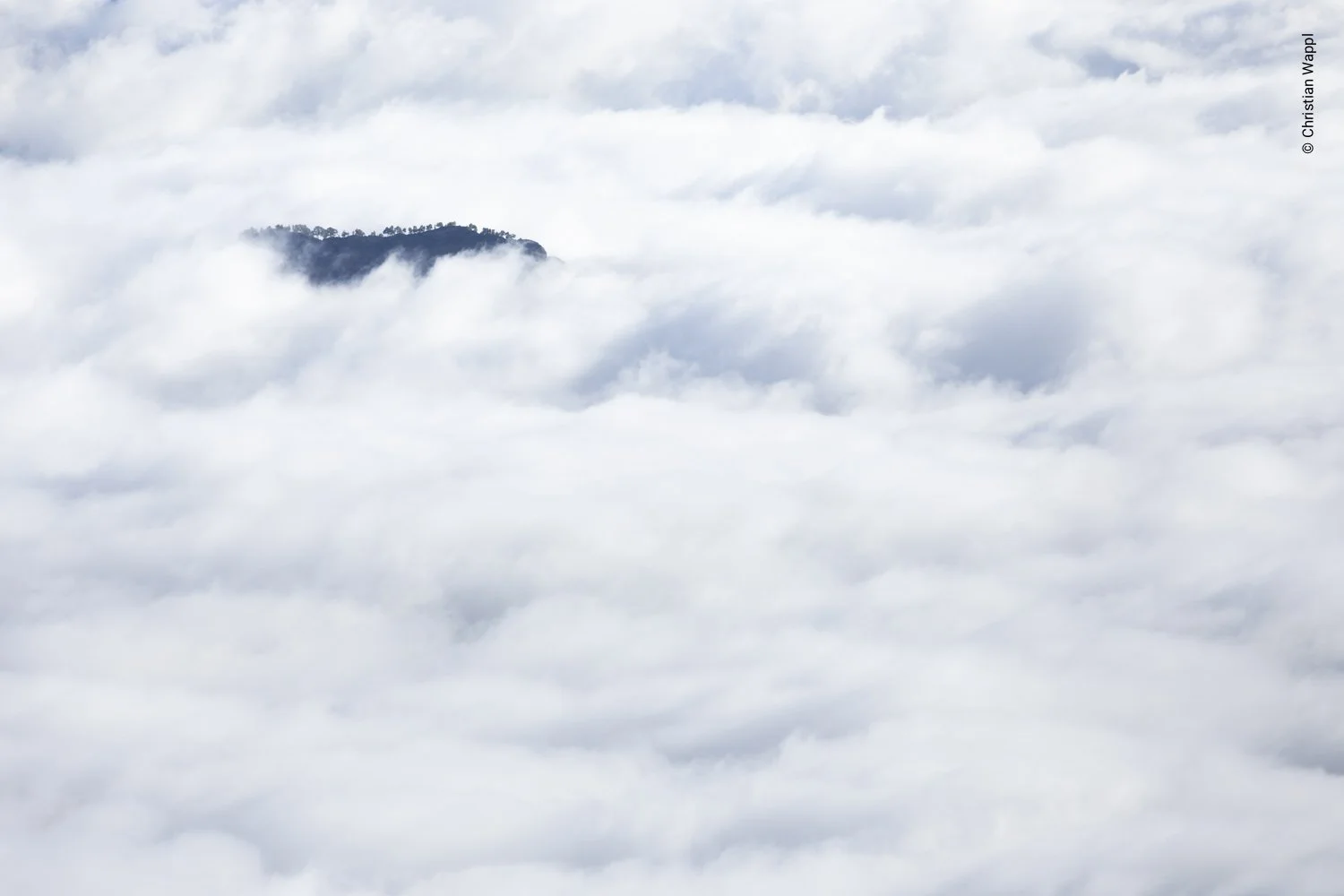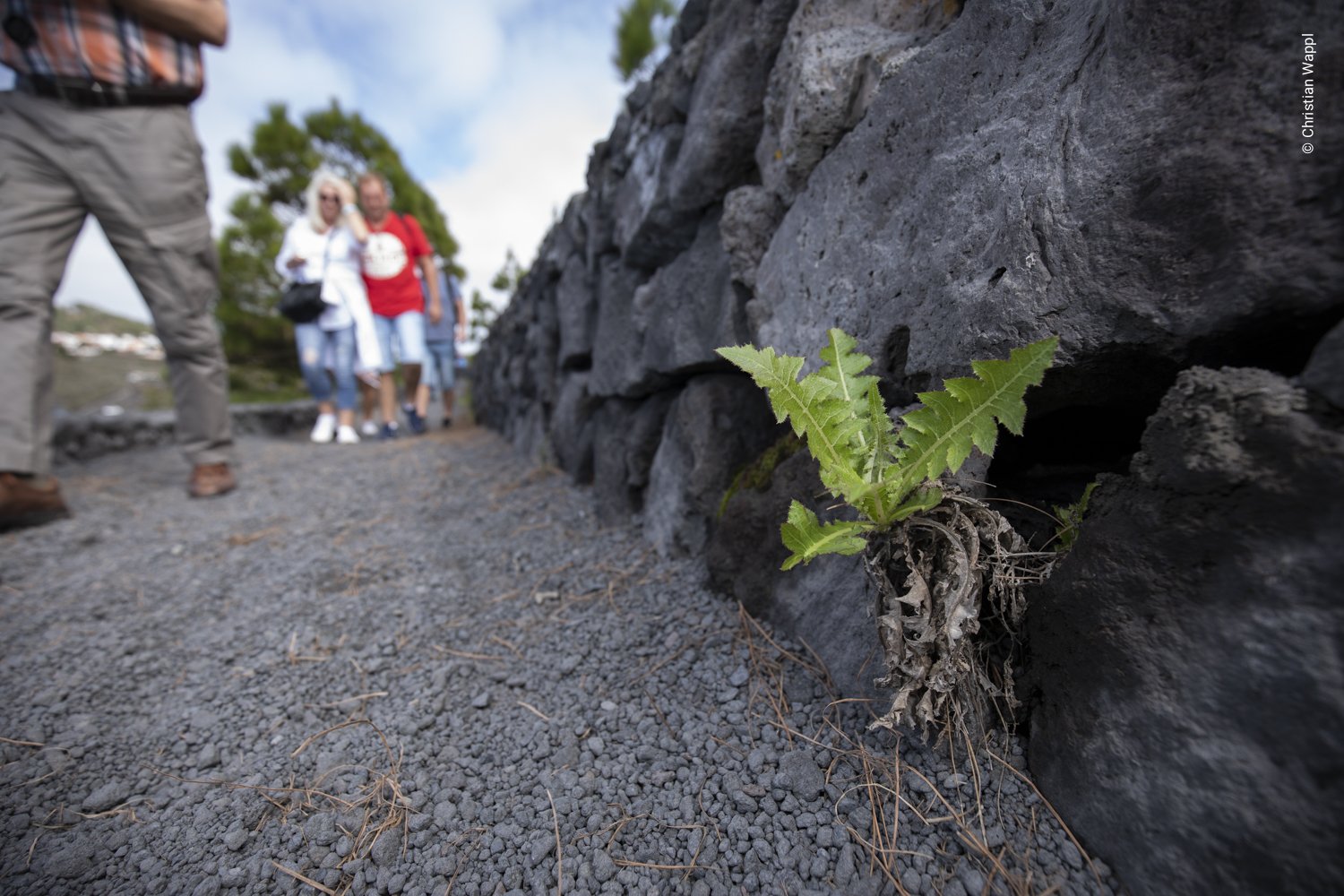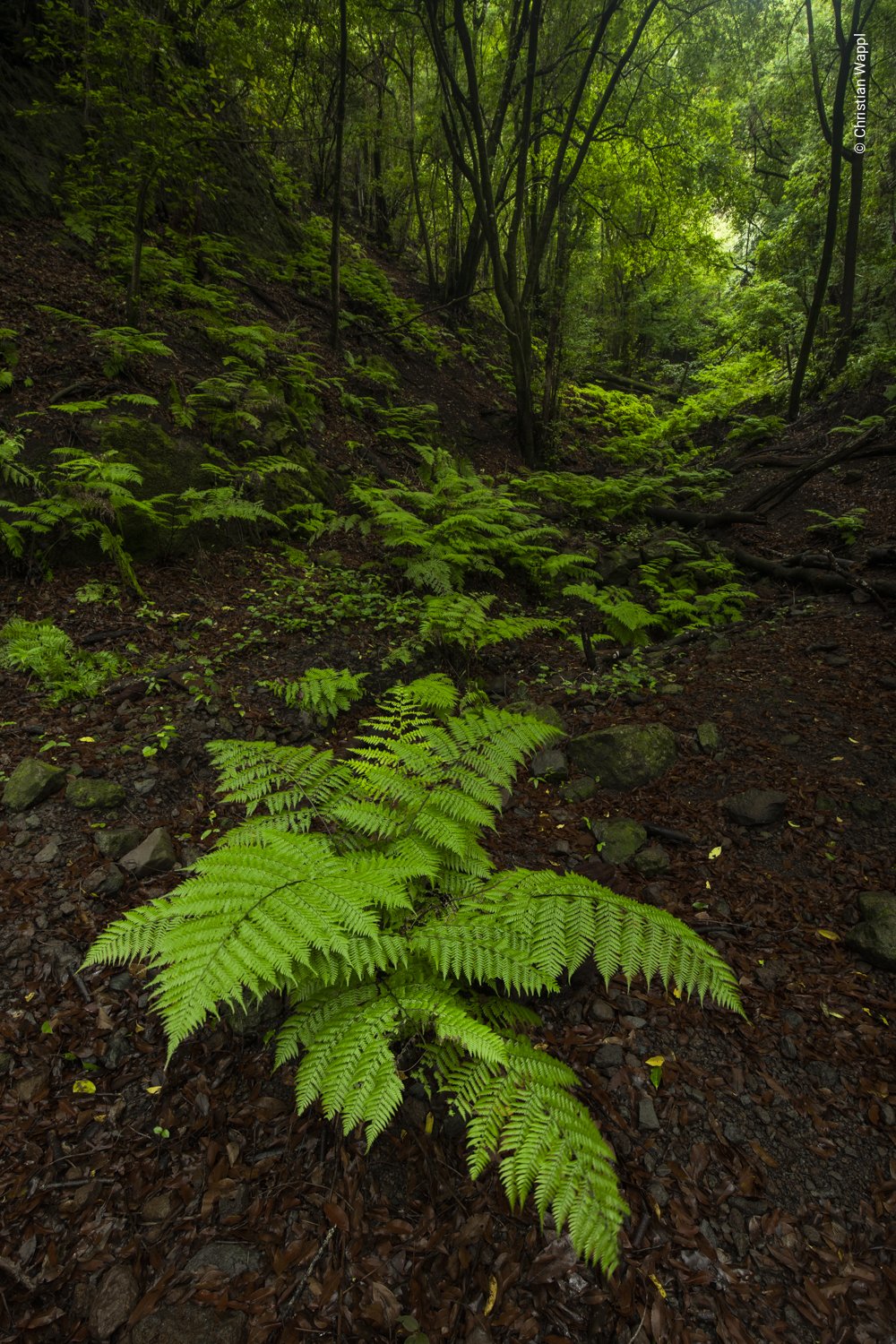La Isla Bonita
01.11.2018 – La Palma, Canary Islands
La Palma immediately seemed strangely familiar, even though I could barely remember my childhood visit to the Canary Islands. Jagged lava rocks, cacti, inquisitive birds and lizards…I could soon pinpoint that the familiarity stemmed from the island’s resemblance to the Galápagos Islands, where I spent two field seasons for my master’s thesis. When I later found out that the Canary Islands were formerly inhabited by giant tortoises, I was rather unsurprised.
Aerial view of Marina La Palma
I had come to La Palma to join my parents on their journey across the Atlantic Ocean via sailing yacht, but, since I was already there, I wanted to take the opportunity and explore the island first. As I began moving my equipment – back-breaking 50 kg – onto my parent’s yacht, the Atlantic Ocean was barely on my mind and my thoughts were focussed on the island’s riches instead. A first stroll through the marina, however, had a sobering effect, as nothing more than a few isopods and spiders showed up. Since the island’s fauna and flora evidently wouldn’t reveal itself so easily, we rented a car first thing in the morning on the next day.
Despite the island’s small size, there were some large distances to cover on La Palma, thanks to its seemingly endless winding roads. Our first destination was the Roque de los Muchachos, arguably the most famous of the island’s viewpoints and home to an observatory with one of the world’s largest reflective telescopes. From the top, the view into the caldera and onto a sea of ever-changing clouds was breath-taking. However, for me, the highlight of the day was a pair of common ravens (Corvus corax tingitanus). Like many island (sub)species, they have little fear of humans and display an incredible boldness when looking for scraps. On our way down, a flock of much smaller black birds whipped past at breakneck speed. We had encountered the island’s second resident corvid species: the red-billed chough (Pyrrhocorax pyrrhocorax barbarus), locally known as graja. Veritable acrobats of the skies, they took little interest in us humans and disappeared as quickly as they came. Although the serpentine road left us tired at the end of the day, I would come to enjoy this type of road in the coming days as it was more varied and exciting to drive on than the highways of Central Europe.
As we drove up and down the island in the following days, I was surprised to see that bananas were the most prominent agricultural crop. This is unusual because they are usually grown in a humid climate, which is not exactly something the lowlands of the Canary Islands are famous for. The lack of humidity seemed to be reflected in the banana plant’s tattered leaves, and I got the impression that these plants were hollow shells of those I had seen in the humid tropics. Nevertheless, large portions of the island were covered in banana plantations, and the resulting fruit tasted delicious. While driving, scrubland was the most prominent of the island’s natural biomes: barren rocks dominated by spurges (Euphorbiaceae) and introduced prickly pear cacti (Opuntia ficus-indica). The scrublands are also home to the iconic dragon tree (Dracaena draco), the most famous among the island’s endemic plants, but it has become rare and limited to certain locations. The Palmeran sow thistle (Sonchus palmensis) is decidedly less impressive but the most ubiquitous of the island’s endemic plants. I saw it reach its highest densities along a barren volcanic caldera exposed to the sun, but individual plants also thrived near trails and roads almost everywhere on the island.
I’d previously read that Gallot’s lizards (Gallotia galloti palmae) were common in the arid scrublands, but wind and weather were not lizard-friendly during my stay. Accordingly, few lizards showed up and those that did, cowered behind rocks, where they were protected from the wind and from my camera. I didn’t get a single decent photo of the species I had expected to be easiest to photograph. Orb-weaving spiders (Araneus bufo) were undeterred by the wind, and spun their webs between cacti near the island’s cliffs. From the cliffs, which were patrolled by ravens and gulls (Larus sp.) in search of a meal, I got a good view of the island’s harsh and beautiful shoreline. The unrelenting waves had carved beaches, coves and small islets out of the jagged black lava. A sign urgently suggested to stay out of the water, and as I watched a lone surfer struggle with the waves hundred meters below me, I happily heeded the warning.
The island’s coniferous forests are mainly composed of the endemic Canary Island pine (Pinus canariensis) and offer a wonderful contrast to the barren scrubland. As I walked over the thick, crunchy blanket of needles that covered the ground, clouds occasionally drifted between the trees, transforming the cheerful forest into something more sombre at a moment’s notice. I found the borders between the pine forest and lava fields to be particularly interesting. Twisted and bent by the lack of nutrients, pine trees were in the process of colonising the naked lava one individual at a time. In many areas, trees bore the scorch marks of forest fires, some of which had been caused by humans. One fire in 2016 was a particularly sobering reminder to be mindful of your impact on nature (and other people). A man living in a cave had tried to burn his used toilet paper, and ended up setting 4.800 hectares ablaze, killing a park ranger in the process.
The laurel forest is an evergreen jungle made up of several loosely related species of laurel tree (Lauraceae). As I walked among the ferns and brushed aside the vines hanging from the trees, I almost felt as if I had arrived in the Caribbean already. Smalls groups of inquisitive chaffinches (Fringilla coelebs palmae) were congregating at the viewpoints. They were waiting for the crumbs that would invariably land on the forest floor when tourists took out their lunch. The blackbird (Turdus merula cabrerae), on the other hand, mostly appeared as a fleeting shadow among the ferns covering the gloomy forest floor. Time flew by as I hiked through the laurel forest, and I enjoyed it so much that I almost forgot to take photos. The viewpoint at the end of the hike offered a breath-taking view of the forest from above. Far in the distance – too far to determine the species – an endemic laurel pigeon (Columba sp.) flew above the canopy in its characteristic, powerful flight.
There was much untapped photographic potential on La Palma, and I hadn’t even taken a single shot of the stars – the main reason why most photographers come to the island. I would’ve loved to stay another week or two, but the weather was already slowly changing for the worse. If we didn’t depart quickly, we might be stuck in La Palma for a longer period of time. The time had come to leave the marina and venture into the open ocean.



















